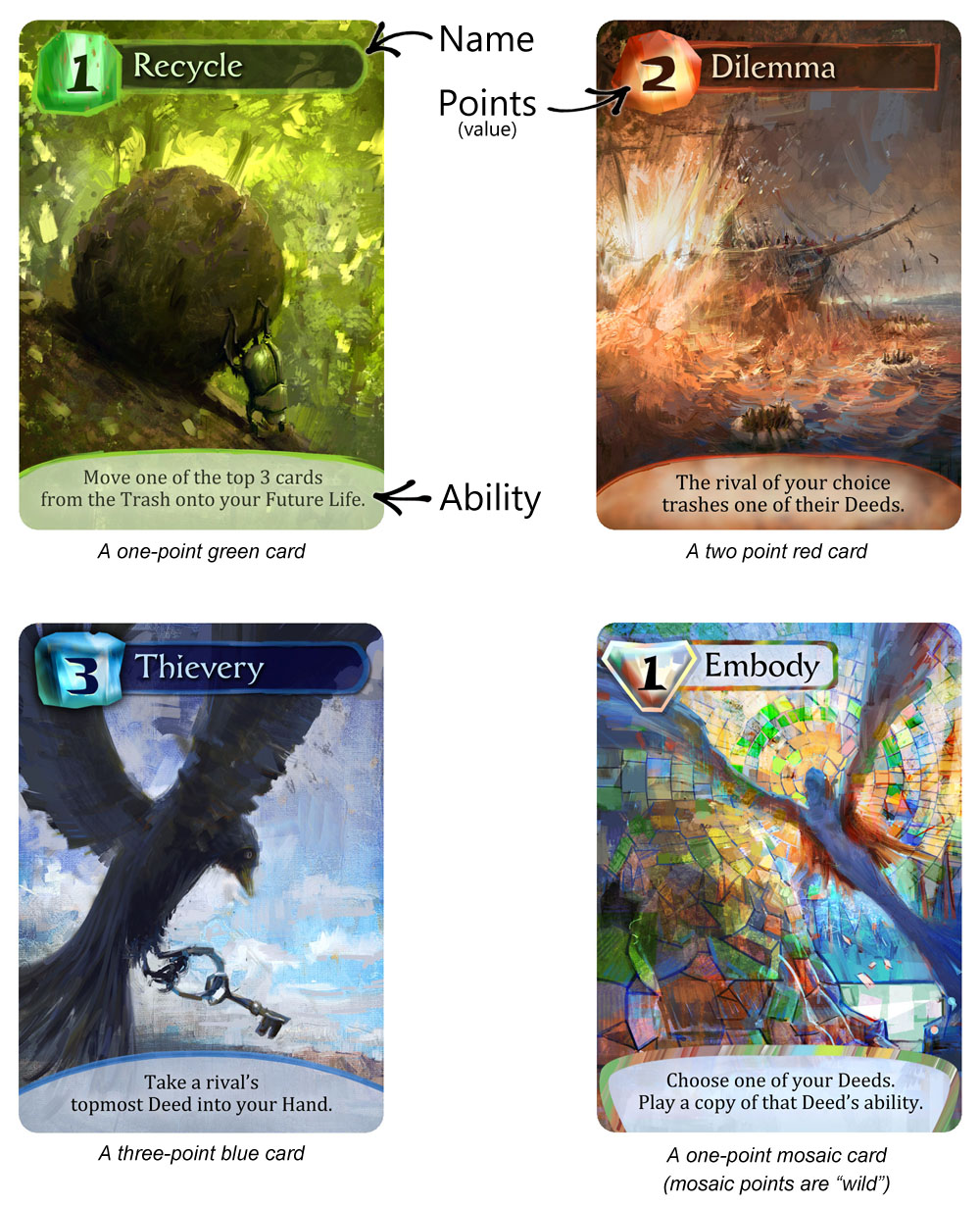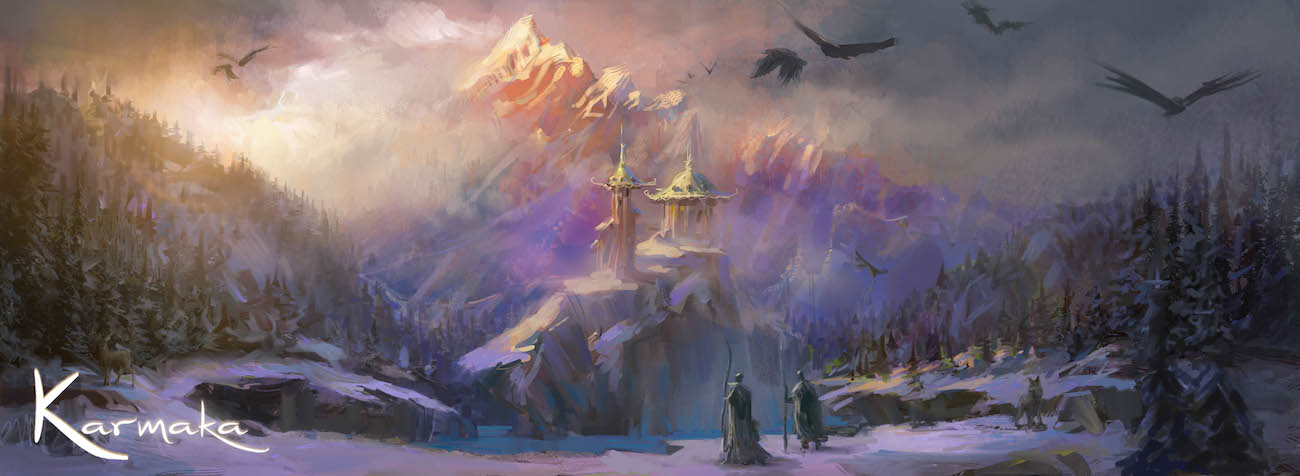The Cards of Karmaka
Welcome to part 2/3 of “How Karmaka Works.” Last time we described the Karmic Ladder and the overall structure of the game. Today we’ll dive into the cards themselves, which make up the meat of the game.
Each card has a color, a point value, a name, and an ability. Examples below:

There are three card colors in Karmaka: red, green, and blue. Red cards tend to have nihilistic abilities; green cards are bountiful; blue cards are cunning. There are also mosaic cards, which are “wild”: they are worth points of any color, and their abilities morph to match other cards on the table.
A card can be played one of three ways:
- 1) Played for points (face-up to the table)
- 2) Played for the ability (do what the card says),
- 3) Played to your Future Life (stashed face-down for your next life).
When you play a card, you pick the way you want to play it (e.g. you can score a card OR use it’s ability – you can’t do both).
Here’s the kicker: after a card gets played for its ability, your rival has the option to take it into their Future Life. In other words, the cards that you benefit from now will appear in the hand of your rival in their next life. As you can imagine, that’s an important part of the “What goes around, comes around” nature of the game. If I sabotage a rival by playing a card on them – say, Thievery (to steal a Deed) – they will get that Thievery next life, which they can use to score 3 blue points or to ding me right back, perpetuating the karmic cycle.
As you can see, the cards themselves are fairly straightforward. This is intentional. We’ve designed Karmaka to be a tactical card game with great play depth (à la Magic the Gathering, NetRunner, etc.) but that’s accessible enough to be played with more casual players.
These cards may raise additional questions for you – namely, how does one score points, and how do cards move around the table? These will all be answered in our next post on how Karmaka works: The Karmaka Playfield.
As always, any feedback or questions are welcome!

